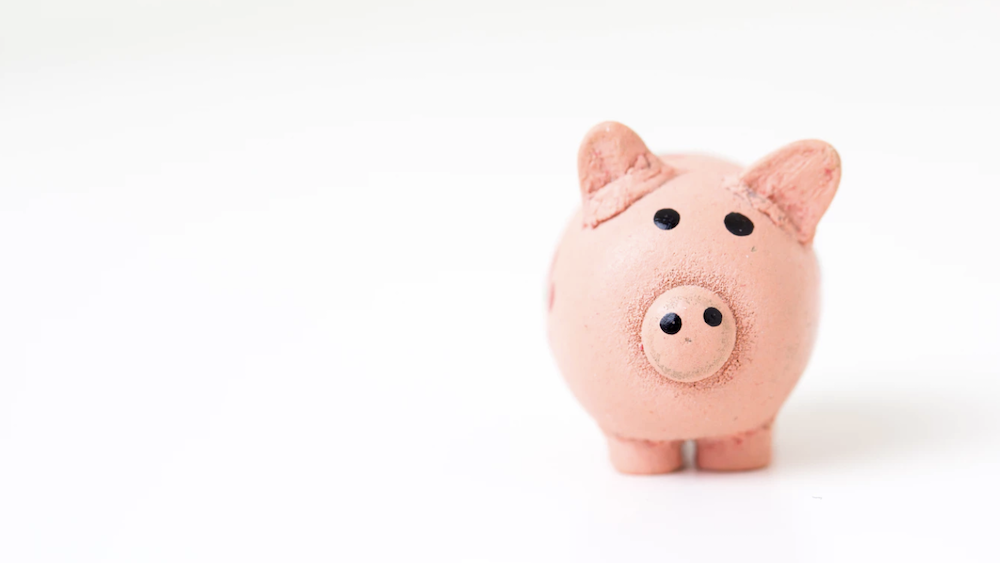
Simone has a Zero Waste lifestyle. This week she tells how living Zero Waste can save you money.
People often think that Zero Waste life costs a lot of money, because sustainable products are sometimes more expensive to purchase. But these quickly pay for themselves because they last longer than cheaper single-use products. In fact, you can actually save money by living more sustainably. How? I would like to share that with you.
Buying in bulk often saves you money because you don't buy too much, but only what you need. If you buy large quantities of something such as rice or pasta, it often makes a huge difference if you calculate the cost per weight compared to a smaller package.
When it comes to clothing, furniture, dishes, and many more things you need in your everyday life, the most sustainable option is often to buy second-hand. When you buy second-hand, you stimulate a circular economy in which products that might otherwise end up in the landfill are given a new lease of life. By buying second-hand you can often find good quality products for a low price. For example, I myself have a huge old wooden cupboard in top condition, which I use as a pantry in my room. I bought the cabinet for fifty euros, and had it disassembled at my home for an extra ten euros. Also, the largest part of my wardrobe consists of clothes that I bought or received second-hand.
Read Simone's blog about developing a sustainable clothing style.
Which brings me to my next point, which is; If you need anything in your area, ask if someone might have something for you. For one-time use, for example, it is a shame to buy a neat dress if you can also borrow it from a friend. Are you looking for glass jars to store food? Ask people in your area if they can store jam jars for you. Often they are even happy with it because it saves them a trip to the glass container.
A point that often comes up is that Zero Waste food is very expensive because you mainly eat vegetables and fruit and this is more expensive than ready-made food from a package. I don't know where this thought comes from, but I can say with certainty that it is not expensive to eat fresh. I often go to the market in my area where I buy fruit and vegetables, but fresh fruit and vegetables are not expensive at all at the toko. Even if you go to the supermarket to buy fruit and vegetables, this will be cheaper than if you buy the pre-cut vegetable mixes from the refrigerator, for example. Yes, even if they are on sale. For example, a 200 gram bag of iceberg lettuce at Albert Heijn costs €1. A head of iceberg lettuce costs €1.09, but a head of lettuce comes in more than 200 grams.
Also read Simone's tips for doing Zero Waste shopping.
I don't have a bulk store in my area and I choose to buy large packages, so that instead of, for example, twenty small packages of rice, I have one large bag. This saves me in packaging, and the packaging I have is so large that I can often reuse it for, for example, collecting the waste that I produce. If you compare the weight with smaller packaging, it is often much cheaper.
For example, by repairing clothes and baking cookies yourself, you save quite a lot of money. I recently put a new button on a pair of trousers because the original button had jumped off. It didn't cost me anything because I still had a button in the house. If I had bought new pants, I would probably have lost thirty euros at the least. And that would not have been a sustainable option.
I also like to have something to snack on in the evening. I love chips, but this is of course not a very sustainable option. I once bought popcorn corn, which at the time cost about two euros for a half-kilo bag. Every now and then I make my own popcorn in a pan. A lot cheaper, more sustainable (because less packaging material) and also a lot tastier than a bag of popcorn from the supermarket, in my opinion.
If you're buying something to live more sustainably, and it's a product that replaces disposable items, it can indeed be a bit more expensive in the beginning. For example, look at a steel drinking bottle or a menstrual cup, but in the long term you earn these products back quickly, saving you money. This is something to keep in mind when looking for these types of products. In these cases it is often smart to go for a quality product so that it lasts for years. That can indeed turn out to be slightly more expensive.

Would you like to follow my personal quest for a more sustainable and greener life? Then follow me on Instagram, and Facebook and on my personal blog De Groene Quest.